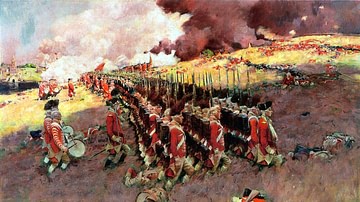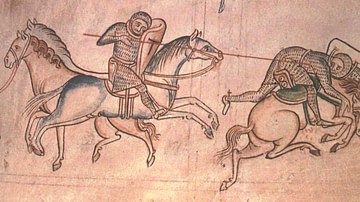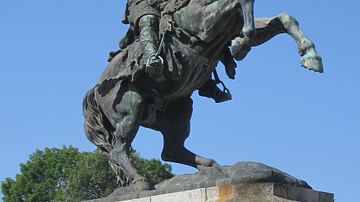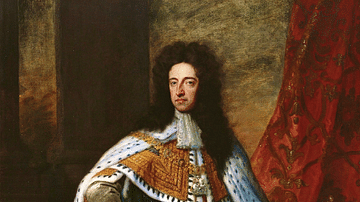Search
Search Results

Definition
Serpent Mound
Serpent Mound (also known as Great Serpent Mound) is an archaeological and historic site in Peebles, Ohio, USA, enclosing an effigy mound 1348 feet (411 m) long in the shape of a serpent, the largest effigy mound of a serpent in the world...

Article
Battle of Bunker Hill
The Battle of Bunker Hill (17 June 1775) was a major engagement in the initial phase of the American Revolutionary War (1775-1783), fought primarily on Breed's Hill in Charlestown, Massachusetts. The colonial troops successfully defended...

Image
Drawing Showing Mathematical Perspective Applied to the Human Head by Piero della Francesca
A drawing by the Italian Renaissance artist Piero della Francesca (c. 1420-1492 CE) showing his theories of mathematical perspective applied to representing the human form. From De prospectiva pingendi.

Definition
William II of England
William II of England, sometimes called William 'Rufus' for his red hair and complexion, reigned as the king of England from 1087 to 1100 CE. The son of William the Conqueror (r. 1066-1087 CE), the younger William was loyal to his father...

Image
Power Looms
The power loom was first invented by Edmund Cartwright in 1785 and it doubled the speed of textile production compared to traditional methods. (The American Textile Museum, Lowell, Mass., USA)

Definition
Sir William Marshal
The Englishman Sir William Marshal (c. 1146-1219 CE, aka William the Marshal), Earl of Pembroke, is one of the most celebrated knights of the Middle Ages. Renowned for his fighting skills, he remained undefeated in tournaments, spared the...

Definition
William the Conqueror
William the Conqueror (c. 1027-1087), also known as William, Duke of Normandy, led the Norman Conquest of England in 1066 when he defeated and killed his rival Harold Godwinson at the Battle of Hastings. Crowned King William I of England...

Video
History of the Alphabet (Language of Coins: 3/16)
History of the Alphabet. This video introduces the Hieroglyphic, Cuneiform, Hieratic, Demotic & Phoenician writing systems. It presents information as a series of selections from a finite collection of symbols... References (book): - The...

Definition
Chepstow Castle
Chepstow Castle, located in Monmouthshire, South Wales, was first built c. 1067 by William FitzOsbern and then significantly improved c. 1190 CE by Sir William Marshal (c. 1146-1219 CE), one of England's greatest ever knights who served four...

Definition
William III of England
William III of England (also William II of Scotland, r. 1689-1702) became king of England, Scotland, and Ireland after the Glorious Revolution of 1688. Protestant William, Prince of Orange, was invited to rule jointly with his wife Mary II...